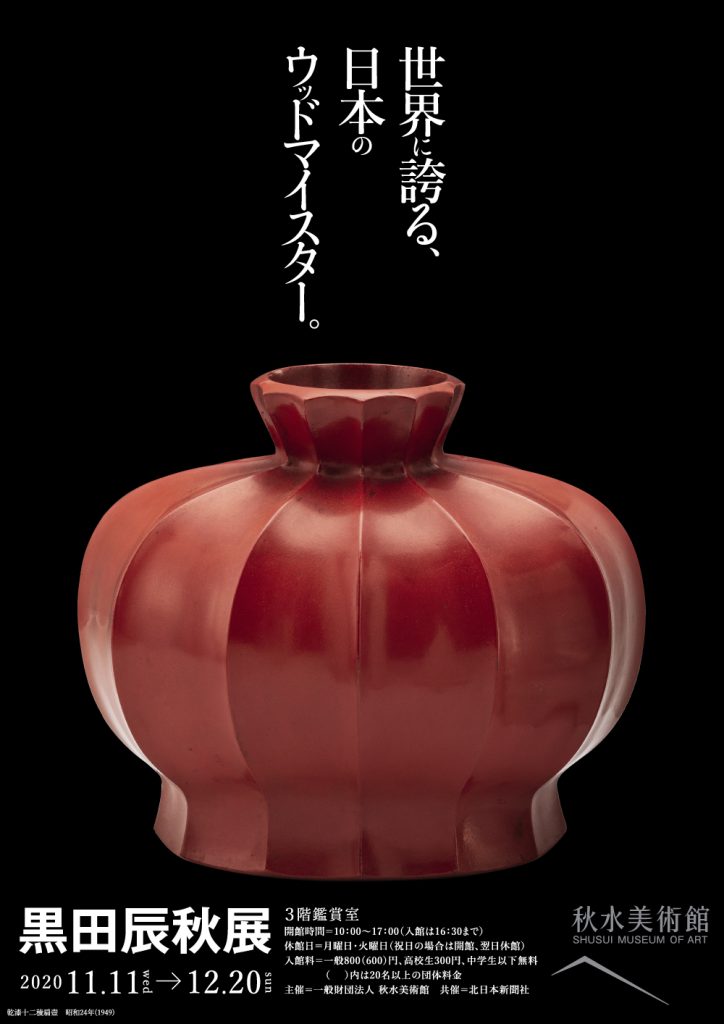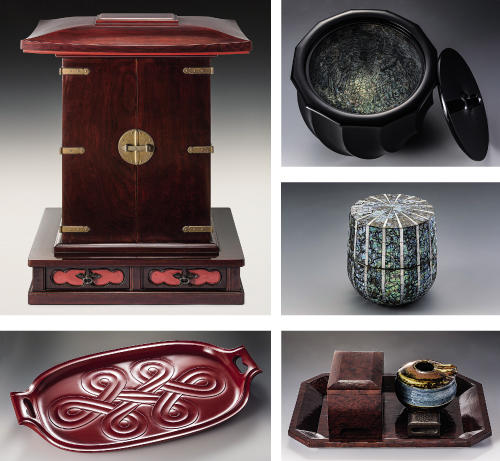Tatsuaki Kuroda was born in 1904, into a family of Kyoto lacquerware artisans; in his mid-teens, he began to study lacquer art on his own. He learned of the Folk Craft Movement through Kanjiro Kawai, which led Kuroda to further deepen his own art of woodworking. In 1970, he became the first person in the field of woodworking to be designated as a holder of an important intangible cultural property (living national treasure). His policy of handling the entire process all by himself, from making the base, to lacquer application and decoration, represents his commitment as an artisan and as a creator. His achievements, backed by his excellent sense of form and technique, remain highly acclaimed. This exhibition introduces a number of exquisite works produced by Kuroda: mighty yet gentle, simple yet gorgeous.
image
Exhibited Items Include:
• Dry-Lacquered Twelve-Sided Flat-Sided Flask (1949)
• Miniature Shrine Made of Zelkova Wood, Lacquered to Feature Woodgrain (1949)
• Dry-Lacquered Twelve-Ridged Water Container for Tea Ceremony, with Mexican Abalone Mother-of-Pearl Inlay Inside (ca. 1978)
• Red-Lacquered Tray with Takara-Musubi Mon (“Treasure Knot Crest”) Design (1949)
• Barrel-Shaped Tea Case with Mexican Abalone Mother-of-Pearl Inlay
• Tobacco Set: Wiped-Lacquered Zelkova Tray, Ashtray by Kanjiro Kawai, and Matchbox by Keiichi Yasukawa





 Back
Back